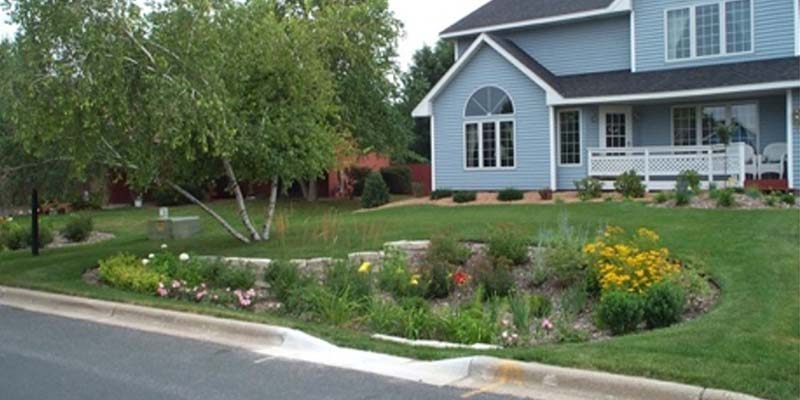
In this land of four seasons, I always look forward to change. Now I am ready to hear the birds singing, see buds swelling on tree branches and watch refreshing rains that wash away the salt and grit from the landscape. But the salt and grit that has accumulated on roads, sidewalks and parking lots these last few months are a major source of pollution in our lakes and streams. At the Minnehaha Creek Watershed District (MCWD) we work hard to protect our water resources from this polluted runoff. We partner with others to build clean water projects and we advocate for early coordination on public and private development to ensure water quality is incorporated early in a project’s planning process. We also educate property owners on how they make changes on their own landscape to capture runoff.
Some simple steps you can take to reduce runoff are to install a rain barrel and redirect downspouts away from driveways and sidewalks so they drain to a lawn or a nearby garden. You can also incorporate native plants into your landscaping and provide areas for water to infiltrate into the ground.
“Native plants” are plants that have been in this region for hundreds of years and have evolved to withstand the local climate and ecological pressures. In general, native plants have long roots that can find water deep underground, prevent erosion, decrease soil compaction, and filter out pollutants. Because they are well adapted to our climate and soil, they typically need little water and no fertilizer or pesticides. And they add beauty and habitat and food for wildlife and pollinators.

If you would like to add native plants to your landscape, your first step is to determine where you’d like to plant them. Ideal locations are along shorelines, slopes, depressions, and areas where turf grass doesn’t grow well. Then you will need to consider the soil type and sun exposure in those spots as these factors will influence which native plants will grow best. Also consider any local regulations that may affect what you can plant where, and what will be amenable to your neighbors. Lastly, determine what kind of plants you like – do you prefer colorful flowers that bloom throughout the year, or do you like grasses or low-growing shrubs? There are a lot of native plant guides out there, and a great resource is Blue Thumb, which is a partnership of local government units (including MCWD), non-profits, and private companies working toward clean water goals.
Another way to incorporate native plants into your yard is to build a rain garden. A rain garden is a bowl-shaped garden of native plants that captures runoff and allows the water to soak into the ground. The water is filtered to remove sediment and pollutants, which keeps dirty water from running off the landscape and polluting local lakes and streams. Rain gardens also add beauty to your yard, support pollinators and birds, and may even inspire your neighbors to install one too!
